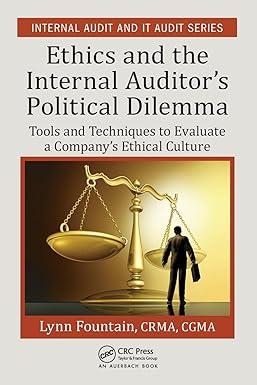Question
REQUIREMENT: 1. Answer the following: a. What is their projected budget? b. How much of the loan will they actually need? c. What are the
REQUIREMENT: 1. Answer the following: a. What is their projected budget? b. How much of the loan will they actually need? c. What are the projected expenses?
NORGAN THEATRE
It was July 2005, and Mary Smith, an active community member in Palmerston, Ontario, had just attended a public rally at the local arena in support of reopening the Norgan Theatre (Norgan). Norgan (shown in Exhibit 1) was one of the few remaining municipally owned movie theatres in Canada. A few months earlier, there had been a proposal to complete an addition to the theatre and to make some cosmetic renovations. As an initial step in this process, an examination of the building's structure was completed, and the building was found to be structurally unsound and would require major renovations in order to remain open. Municipal council was split on this controversial issue. Although the rally's 600 participants demonstrated the community's support, progress on the reopening decision was slow. It was now early 2007, and Smith knew that if renovations began immediately and a comprehensive business plan was created, Norgan could reopen in January 2008.
THE MOVIE THEATRE INDUSTRY
The Canadian movie theatre industry, comprised of 681 venues, was cyclical with resurgences in popularity occurring approximately every 10 years. Unlike many other industries, economic downturns tended to benefit the industry, since "in the last eight economic downturns, movie attendance rose during five of them."2 The quality and calibre of films produced also had a major impact on the success of movie theatres. More recent challenges included the increased availability of films through alternate distribution channels (e.g., pay-per-view movies, downloadable movies on the Internet) and the shortening of "theatrical release windows. "3 The number of theatres had decreased over the years, but many of the remaining theatres had chosen to upgrade facilities, specialize by content or price, or improve services and amenities.
Royalty payments to film distributors were the largest expense incurred by theatres, and these royalties charges had increased by an average of 4.2 per cent between 2007 and 2008. These fees were negotiated with film distributors using one of three different formulas: firm term, a rate based on a percentage of revenue, which was decided before the engagement; review (or settlement), a rate set upon completion of the engagement; and sliding scale, a formula that applied decreasing rates to successive weeks of an engagement.4 Sliding scale rates were typically 50 per cent to 70 per cent of box office revenues at the beginning of a movie's showing (often referred to as a "run") and about 30 per cent after a month or two of the movie's showing. See Exhibit 2 for Ontario's industry ratios.
TOWN OF MINTO, ONTARIO
The Town of Minto (Minto) was located between major urban centres of Southern Ontario and recreation areas along the eastern shore of Lake Ontario and southern Georgian Bay (see map in Exhibit 3). It was comprised of the former towns of Harriston and Palmerston, the former village of Clifford and the former rural area of Minto Township. Minto's population was 8,504 in 2006 and was expected to rise to 8,813 by 2011. As shown in Exhibit 4, Minto's population reflected more citizens in the zero to 19 and 65+ age brackets than Ontario's average population. Minto's per-household average annual income was about $5,000 lower than the provincial average (Exhibit 5), with manufacturing and agriculture industries employing the largest percentage of the population (Exhibit 6). Minto was governed by an elected council of seven people, consisting of a mayor, deputy mayor and five councillors, elected for three-year terms. Minto's vision statement is given in Exhibit 7.
NORGAN THEATRE
Norgan opened on August 18, 1947, after George Norgan, a successful Vancouver businessman, donated $50,000 to improve the leisure opportunities in his hometown of Palmerston, Ontario. Although attendance throughout the years had been relatively level at the theatre (see Exhibit 8), Norgan had experienced deficits in the past five years, ranging from $16,704 to $22,713. As a municipally owned theatre, the theatre and property belonged to Minto; therefore, Norgan was primarily accountable to Minto for its annual "excess revenue over or under expenditures." Exhibit 9 shows Norgan's financial performance for 2004.
Films were shown on Friday, Saturday and Sunday evenings. Norgan employed a full-time manager, Ovo to three part-time projectionists, and eight to 10 part-time concession employees. Concession employees were typically high-school students. For each show, the manager would book the film, supervise preparations, prepare the advertising and check on the concession staff. For every film showing, one projectionist and one to two concession employees were required, depending on the popularity of the film.
THE LOCAL COMPETITION
Capitol Cinema
Capitol Cinema was a two-screen, independent theatre in Listowel, Ontario, about a 15-minute drive from Palmerston. It showed mainstream films shortly after they were shown in the large chain theatres. Admission prices were $9 for adults and $6 for children and seniors.
The Gorge Cinema
The Gorge Cinema was a single-screen, independent theatre in Elora, Ontario, showing a mixture of independent and mainstream films. Mainstream films were played approximately three to four weeks after they were shown in the large chain theatres. Driving time from Palmerston to Elora was approximately 30 minutes. Admission prices matched those of Capitol Cinema.
Large Theatre Chains
Large theatre chains, such as Cineplex Entertainment, dominated the Canadian motion picture industry, and represented 83 per cent of the country's national operating revenue in 2008. Galaxy Cinemas, in Waterloo, Ontario, was the closest large theatre to Palmerston and was about a 45-minute drive by car. It had 10 screens, and admission prices were $10.25 for adults and $7.99 for children and seniors.
JUNE 2005
Unfortunately, in June 2005, an examination of the building's structure determined that Norgan's facility was no longer fit for use. The theatre was shut down and remained closed for approximately two years. Smith knew Minto would be unlikely to provide financial support to a facility that consistently could not cover its costs.
REOPENING OF THE THEATRE
Renovations
To reopen Norgan in early 2008, extensive renovations were required not only to make the facility structurally sound, but also to upgrade it to modern standards for accessibility. These renovations included new walls and roof, and an overhaul to the concession, washrooms and entranceway. The renovation was expected to cost $350,000 and would take approximately one year. If the proposed renovations were completed, Norgan would then be equipped to host live events, such as comedy shows or concerts, in addition to movies.
Financing
Since Norgan's assets were owned by Minto, the theatre alone did not have collateral to obtain a bank loan. Smith knew that Minto might be willing to provide some financial support, but would expect the community to show its own financial support as well. Smith estimated the community could fundraise $65,000 in donations. Through initial discussions with the town, she discovered that the town had plans to sell a piece of property (estimated market value of $115,000) on the edge of Palmerston and that Minto might be willing to give the proceeds to Norgan. Smith also anticipated that Minto would be willing to provide a loan up to $200,000, interest free, if Norgan could repay it within 15 years.
Operations
After reviewing Norgan's financial data from 2004, Smith knew its salaries and wages would have to be reduced to provide a positive cash flow. Since movies were shown outside normal working hours, Smith believed that the majority of the theatre's labour could be done by local community volunteers, but how many volunteers would be required, how should they be recruited, and how should they be managed?
MARKETING
Movie Mix
Norgan obtained film rights through two different organizations. Mainstream films were accessed from production companies (such as Universal, Disney and Alliance) through a regional film distributor. Norgan also belonged to Film Circuit, a division of the Toronto International Film Festival, that aimed to provide Canadian and international independent films to underserviced areas. Norgan paid for its movie distributor costs on a sliding-scale basis. Royalties were typically 50 per cent in the first week after the film's release and 35 per cent after the first week. Smith knew Norgan needed a plan for the types of movies it would play, and it also needed to decide whether to show movies in their debut week or wait until the subsequent week.
Prices
In the spirit of providing a community service, Norgan's ticket prices would remain reasonably low: $7 for adults and $5 for children. Concession prices also would be lower than many competitors: $2 for most bottled beverages, $1 for most canned beverages, and $1.50 for chocolate bars. If Norgan decided to show movies in the first week of their theatrical windows, then adult price admission would be raised to $8 to help cover costs. If movies continued to be shown after the first week, adult admissions would remain at $7. Smith wondered whether any other pricing changes should be considered.
Promotion
Norgan always had an annual advertising and promotion budget of $1,200 (spread evenly throughout the year), and Smith believed that this level should be maintained if the theatre were reopened. In addition to these promotion efforts, Smith believed $500 should be spent in the first month after the reopening in order to help create a "buzz" in the community.
Traditional advertising was available through one of three local radio stations: 101.7 The One Today's Best Music, AM920 CKNX Information County, and 94.5 The Bull The Rock Station. Advertisements could also be placed in The Minto Express, a weekly, paid-circulation newspaper, which was delivered to 1,500 homes. A one-quarter-page advertisement cost $330 and a one-sixth-page advertisement cost $220. Smith also wondered whether she could capitalize on Norgan's current community support and future volunteer base in order to create more publicity opportunities. With a very limited budget, a lot of creativity would be needed in the selection of promotional vehicles and the message to be conveyed.
FINANCIAL PROJECTIONS
Smith wanted to evaluate month-to-month cash flow, profitability and ability to repay the loan under two scenarios: showing the movies during their opening week or showing the movies after their opening week. With the potential for construction delays, Smith conservatively projected that if the theatre were reopened, 2008 would be the first full year of operations.
Sales
With the upgraded facility, Smith estimated Norgan's admissions would increase to 10,000 (50 per cent adults, 50 per cent children) in its first year of operations (2008) and 12,000 in its second year of operations. To account for the summer and Christmas rushes, these revenues would be split, with 20 per cent in the first and third quarters of the year, and 30 per cent in the second and fourth quarters of the year. Although showing films during their opening week could attract more patrons to Norgan, the one-dollar increase in price could deter some as well; therefore, to be conservative, Smith decided to use the same attendance estimates when analyzing both scenarios.
Concessions sales were expected to be consistent with those of 2004, in terms of dollars of concession revenue per movie patron. Smith also projected that Norgan could earn $8,000 annually (evenly spread throughout the year) for birthday parties and special events.
Costs
In addition to the film-rentals expense mentioned earlier, concession expenses would be the same percentage of concession revenues as in 2004. Costs associated with special events would be 40 per cent ofrevenues.
Although concession and ticket sales would be run by volunteers, the movie projectionists and a part-time supervisor would be paid. These wages would cost $5,000 annually, beginning in January 2008.
Booking service fees and telephone service costs would remain the same and would be spread evenly throughout the year and paid in the month incurred. Maintenance was expected to rise to $1,500 per year. Equipment leasing costs, for a DVD projector and related sound enhancements, were projected to be $5,000 in 2008 and $10,000 in 2009.
Insurance, hydro and water expenses would be two per cent higher than in 2004 and would increase again by two per cent in the second year of operations. Due to improved insulation, heating costs would drop to $3,500 annually. All four costs would be incurred monthly, but not paid until approximately 15 days after the end of the month. Miscellaneous expenses would remain the same percentage of total revenue. At the end of the year, Norgan would retain $5,000 as its ending cash balance and would forward any additional cash to Minto as payment on the theatre's outstanding loan.
CONCLUSION
Smith knew she had little time to do the necessary analysis and to write a convincing plan to save Norgan. If Minto was going to support Norgan's renovations, Smith would need to prove not only the theatre's financial feasibility but also its ability to meet the needs of the community.
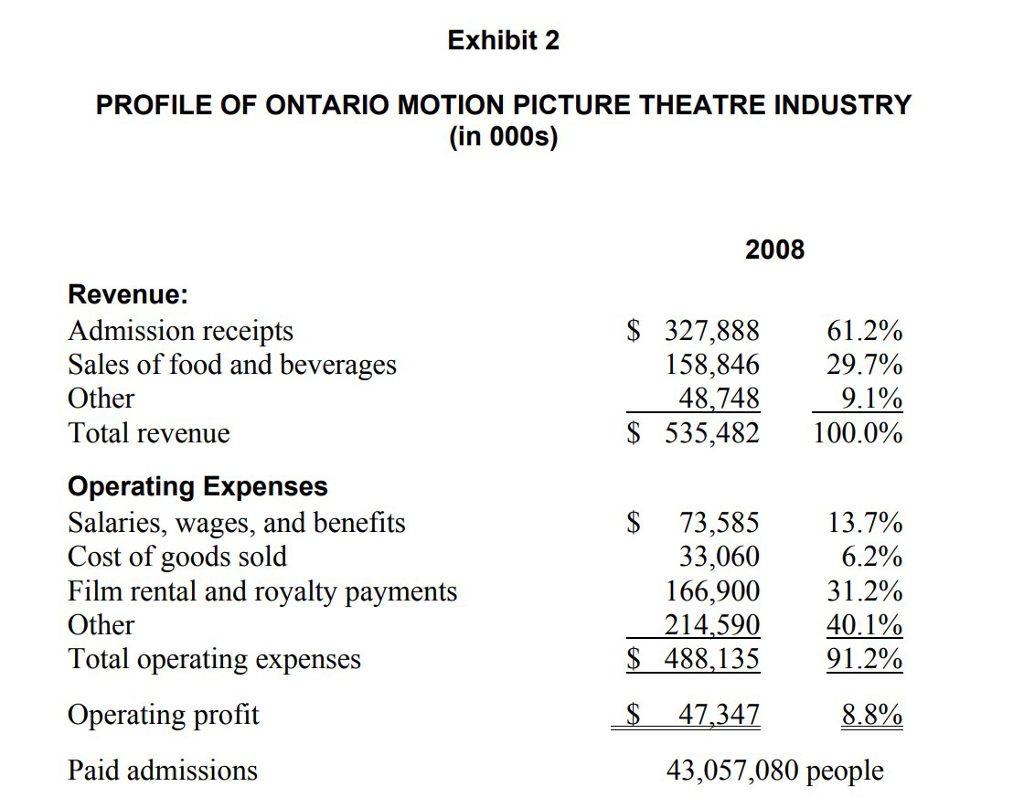
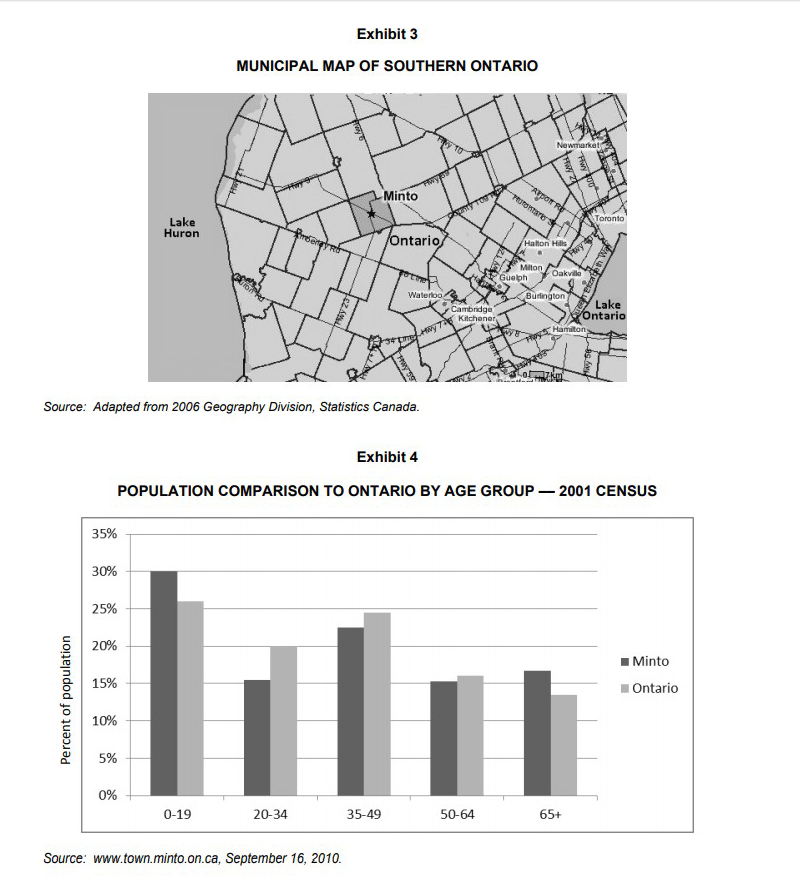

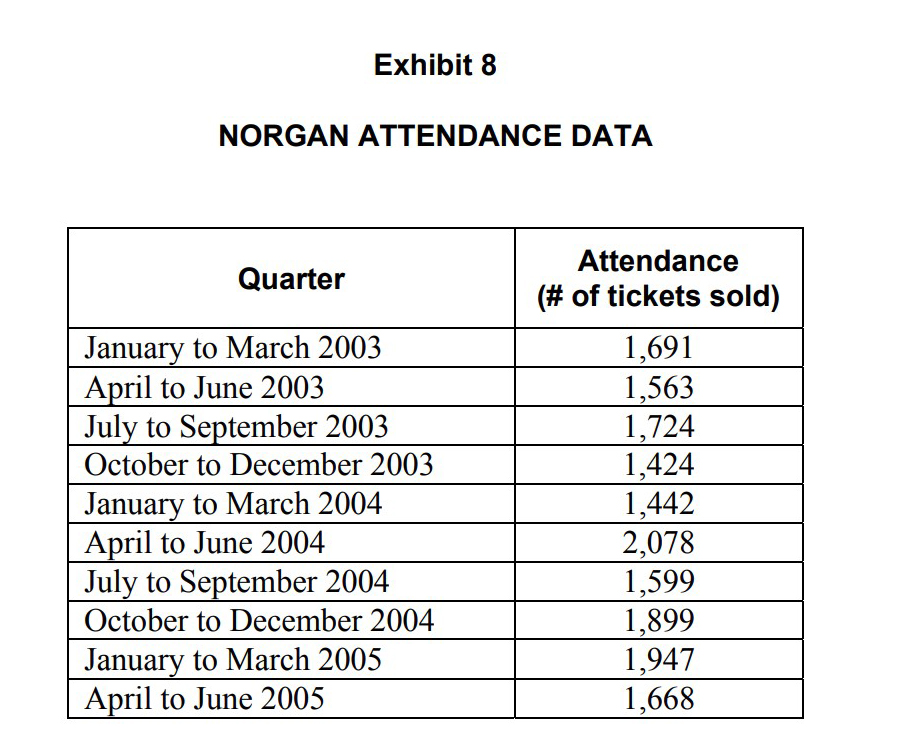
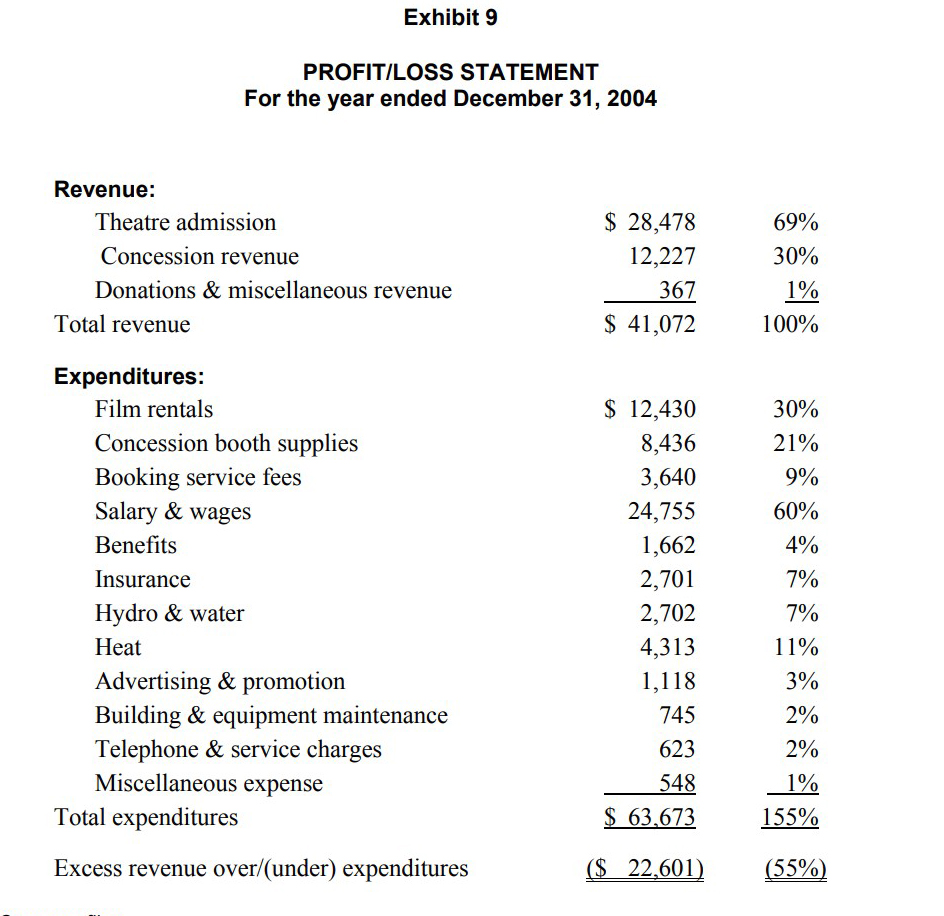
Step by Step Solution
There are 3 Steps involved in it
Step: 1

Get Instant Access to Expert-Tailored Solutions
See step-by-step solutions with expert insights and AI powered tools for academic success
Step: 2

Step: 3

Ace Your Homework with AI
Get the answers you need in no time with our AI-driven, step-by-step assistance
Get Started


